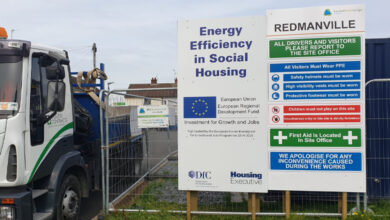Transfer of powers
 A summary of the powers available to the new councils from next April.
A summary of the powers available to the new councils from next April.
Existing responsibilities
• Arts and entertainment
• Building control
• Burial grounds
• Community relations
• Dog control
• Environmental health
• Leisure and recreation
• Parks and green spaces
• Small harbours
• Street cleaning
• Waste management
New responsibilities
(listed by current authority)
Department of the Environment
• Local development planning
• Development control
• Enforcement
• Nominating buildings for spot-listing
• Listing buildings of architectural and/or historic interest
Department for Social Development
• Urban regeneration
• Community development programmes
• Environmental improvement schemes
• Area-based regeneration (e.g. Neighbourhood Renewal)
Housing Executive
• Registration of houses in multiple occupation
• Housing unfitness (including repair and demolition notices)
Invest NI
• Local economic development
• Enterprise shows
• Youth and female entrepreneurship
• Social entrepreneurship
• Supporting women in business
Northern Ireland Tourist Board
• Business start-up advice
• Small scale tourism accommodation development
• Advice to developers on tourism policy
Department of Culture, Arts and Leisure
• Water recreational facilities
• Sports policy (more input for local government in decision-making)
• Armagh County Museum (to Armagh, Banbridge and Craigavon)
Department of Agriculture and Rural Development
• Delivery of Rural Development Programme
• Donaghadee Harbour
(to North Down and Ards)
Department for Regional Development
• Off-street parking (excluding park-and-ride facilities)





